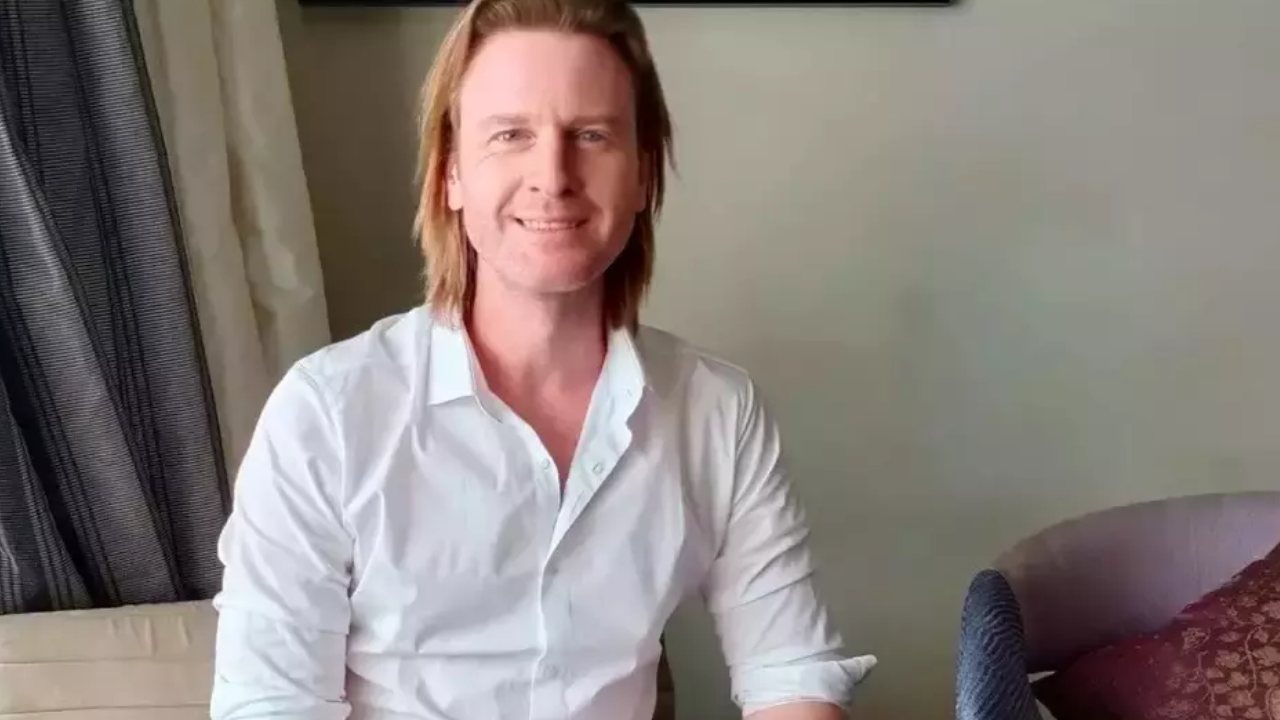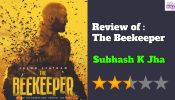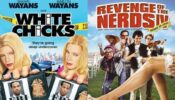It has been quite a while since you’ve been part of the Indian movie industry. How would you describe your journey so far?
In a word, Subhash, it has been an “adventure”. I have had the incredible privilege of being a part of telling some of the most incredible stories ever told, collaborating with some of the most skilled and talented technicians and actors, and working in some of the most beautiful places on the face of the earth. And truly, it is a joy to have been able to make my passion into my profession, both as an actor and as a musician.
I’m grateful every day for this adventure.
I’m also filled with gratitude towards audiences in India and abroad for accepting me on their screens and in their ears, and I hope that they continue to do so.
Finally, I’m thankful for the positive reviews that I’ve received from critics and the public alike for my performance in ‘Ae Watan Mere Watan’.
Was acting your chosen vocation from the word go? What brought you to these shores and to Indian cinema?
I began my journey as an actor on stage in the USA at the age of 9 or 10. Over the next 10 years I performed in about a dozen plays, musicals, dramas, and comedies. I credit the directors with whom I worked over the course of my childhood and into my early adult years, especially theatre director Tom Peterson, with giving me the fundamentals that I rely on to this day. At 19 I took time off from acting to focus on my studies, and I earned a degree in Philosophy and a degree in Psychology from Boston University. I found that I couldn’t act and study at the same time, it just wasn’t possible for me, but I did write a lot of music in that period. And then, after university, I got back into acting and did a bit of modelling. And it was when I was traveling in India, on something completely unrelated, that a friend sent me to an audition for a Tv commercial. As you know, ad filmmakers in India also make films; R. Balki was making Cheeni Kum at the time, and he put me in the film. And even though it was a small comedic role, the film did extremely well, and the audience and industry noticed me. After CK, and few more films, series, and Nach Baliye, opportunities kept coming. And to this day I continue to benefit from the kindness of my co-actors, directors, DOP’s and others who keep recommending me for work. ‘Ae Watan Mere Watan’ is a great example of this, as my name presumably came to director Kannan Iyer through a number of channels including Amalendu Choudhary with whom I’d shot two films previously (Sahib Biwi Aur Gangster 3 and Roohi) and actors Emraan Hashmi and Anand Tiwari with whom I’d worked on a film each (Chehre and Jo Dooba So Paar respectively), and most significantly from Gautam Kishanchandani, the casting director of AWMW, with whom I had worked just a few months before on Khufiya. There are not so many roles for non-Indian white actors in Indian cinema, but I’m incredibly grateful that when there are, the people that I’ve worked with tend to recommend me for them.
How and when did you land your first role in India and what was it like to be part of a cultural phenomenon so far removed from your own?
As I mentioned, Cheeni Kum was my first experience in Bollywood. Shortly thereafter I worked on Loins of Punjab Presents, which was a delightful little comedy which has become something of a cult classic. And then after that, Nach Baliye gave me pan-India exposure on television, performing each week on a completely different dance form. With my girlfriend at the time Sweta Keswani, we danced everything from North Indian Bhangra to South Indian Classical, to contemporary Bollywood, and even the Waltz. That was a formative experience in and of itself, but it also opened doors to a lot of other opportunities. Thereafter I did a number of television programs like Jhansi Ki Rani and Dhoondh Legi Manzil Hummein, I broke into Tamil Cinema with Madrasapattinam alongside Amy Jackson, I was introduced in Malayalam Cinema in Santosh Sivan’s Urumi with Geneila, Prabudeva, and Prithviraj. In Hindi I carried on with Chittagong alongside Manoj Bajpai and Nawazuddin, and Main Aur Charles with Adil, Richa and Randeep, and Joker with Akshay. I debuted in Bengali with Yeti Obhijaan opposite Prosenjit Chatterjee and so on. Finally, when OTT took off, I starred in each platform’s first series, from Amazon Prime’s Inside Edge, to Alt Balaji’s Bose, to Disney’s Aarya alongside Sushmita Sen. And most recently, with Khufiya and AWMW, I’ve seen my first direct to OTT film releases.
What was it like to be a part of a cultural phenomenon so far removed from my own?
Well, I didn’t grow up knowing anything about Indian Cinema. I really learned about Bollywood by being a part of Bollywood. And, in a sense, that has been incredibly advantageous for me. When I go on set and encounter superstars like Amitabh Ji, Tabu, Mohanlal, and Mammootty, I meet them as co-actors. Sure they are incredibly accomplished co-actors, and that can be intimidating, but they’re not the personification of cinema for me, the way they would be if I grew up watching their work. If I was to shoot with Brad Pitt or Robert Downey Jr., or Robert De Niro I would be starstruck. But here in India, I’m able to work with the biggest starts on creating a scene, creating that emotion, creating an experience for the audience, without really being too hung up on their persona. So, at the risk of being repetitive, it has been an adventure to be a part of this phenomenon that is very, very different from anything I knew in the U.S.. But, even though the cultural context is different across industries and very, very removed from the one that I come from, ultimately we’re doing the same thing that I began doing years ago as a kid on the stage: We’re trying to tell stories, to connect with the audience and give rise to an emotion in their hearts. In that sense, to me cinema and theatre and television, all over the world, is fundamentally the same.
Tell me about the roles and films so far that have offered you the most scope?
The first project that I felt offered me significant scope was Madrasapattinam. If you’re not into South Indian cinema, you’re likely not familiar with it, but it is an absolutely beautiful film and I urge you to check it out. It was Amy Jackson’s first film wherein my character falls in love with Amy’s, and Amy’s falls in love with South-Indian actor Arya’s. The film features an epic wrestling match and later a clock-tower fight sequence between Arya and I, but more than that, the role of Robert Ellis has a lovely arc for me to explore. He goes from being a rather content (albeit spoiled) man, to a spurned lover, to a maniac hell-bent on revenge! Look for the scene in the climax wherein Amy’s character threatens mine with a sledge hammer, telling him “leave us alone or I’ll kill you” to which Robert replies “Kill me? For what? For loving you.” In that moment I remember the director Vijay explaining that what he wanted was for the audience to see the world from Robert’s point of view, just for a moment. And even if they didn’t agree with him, they should at least understand him.
And thereafter?
The second of my roles with the most scope was in Main Aur Charles, which starred myself, Randeep Hooda, Richa Chadha, and Adil Hussain. It is essentially a biopic on Charles Sobhraj and Richard Thomas, the pair that escaped from Tihar prison and went on the run to Goa before finally being re-captured. In the film I portray Richard Thomas, a good man who finds himself imprisoned in India on drug charges. While in jail, he is manipulated by Charles Sobhraj into becoming an accomplice, but he eventually reclaims his power and escapes the clutches of Sobhraj by becoming the key witness against him in court. His journey from a hapless prisoner, to an unwitting accomplice, to a victim, and finally to a free man, is a captivating one, and the scope it offered was substantial.Most recently, the project that offered me an equal amount of scope, though it had much less screen time than the two above, was Aarya. Ram Madhvani who directed this Disney+ Hotstar series featuring Sushmita Sen in the lead, brought me Bob Wilson. He is a character that is very, very similar to me: He’s a musician, he moved from the US to India, and he married an Indian woman… all hallmarks of my own journey. Bob is good guy whose life becomes increasingly polluted by the darkness and violence of his new wife’s family. His downfall begins when, shortly after he marries into the family, his brother-in-law is shot and killed. A short time later, his niece becomes infatuated with him and tries to seduce him. Then, shockingly, his wife is murdered. And finally, when he discovers who has killed her, he takes revenge by becoming a murderer himself. Everything that Bob does, starts from a position of a good person, but nevertheless he loses everything, and is unable to escape the tragic spiral that befalls him. The scope as well as the journey was very meaningful for me, since in the course of playing the character, I faced the realisation that in the same set of circumstances, I probably wouldn’t have acted any differently than Bob, and I would have likely suffered exactly the same fate…










